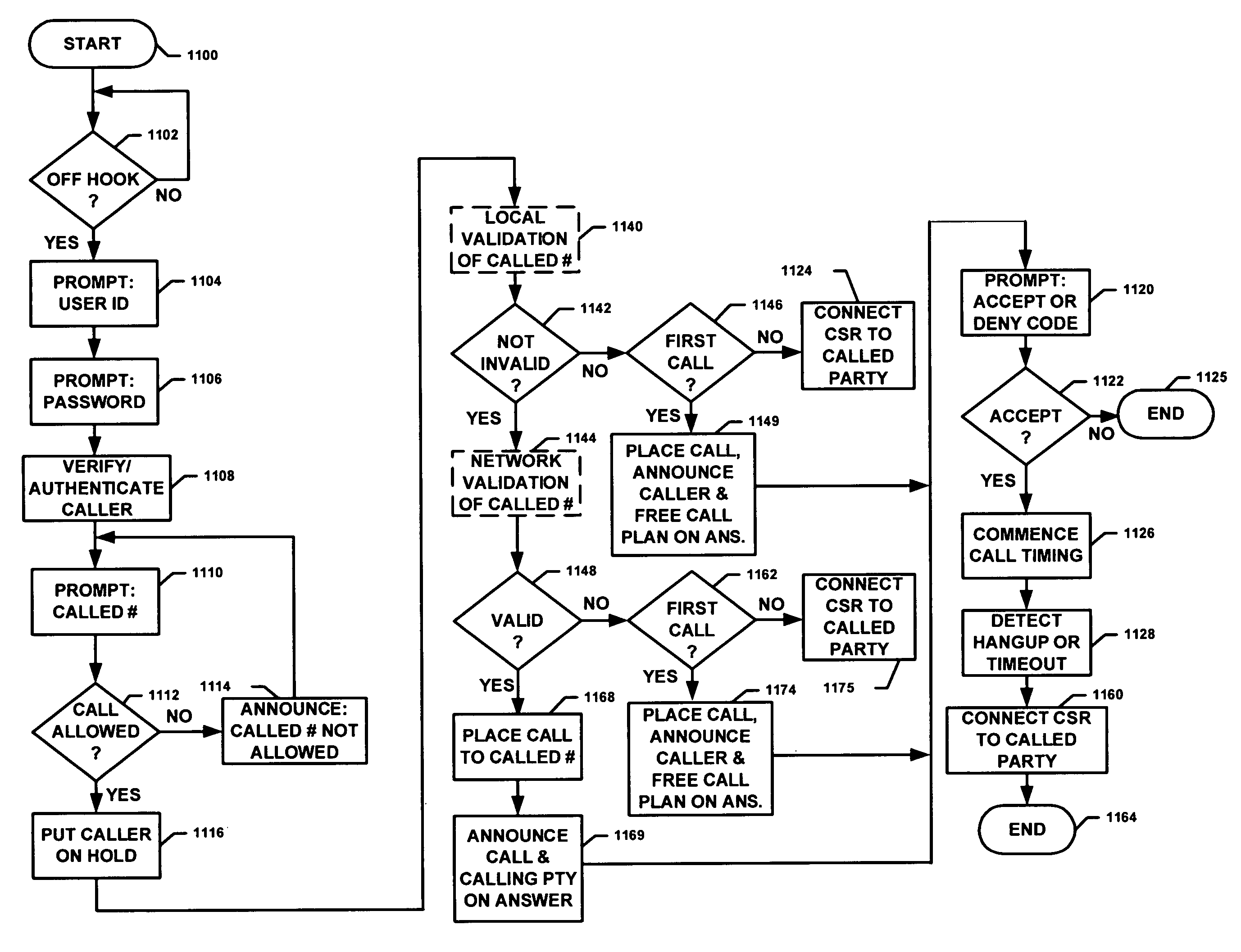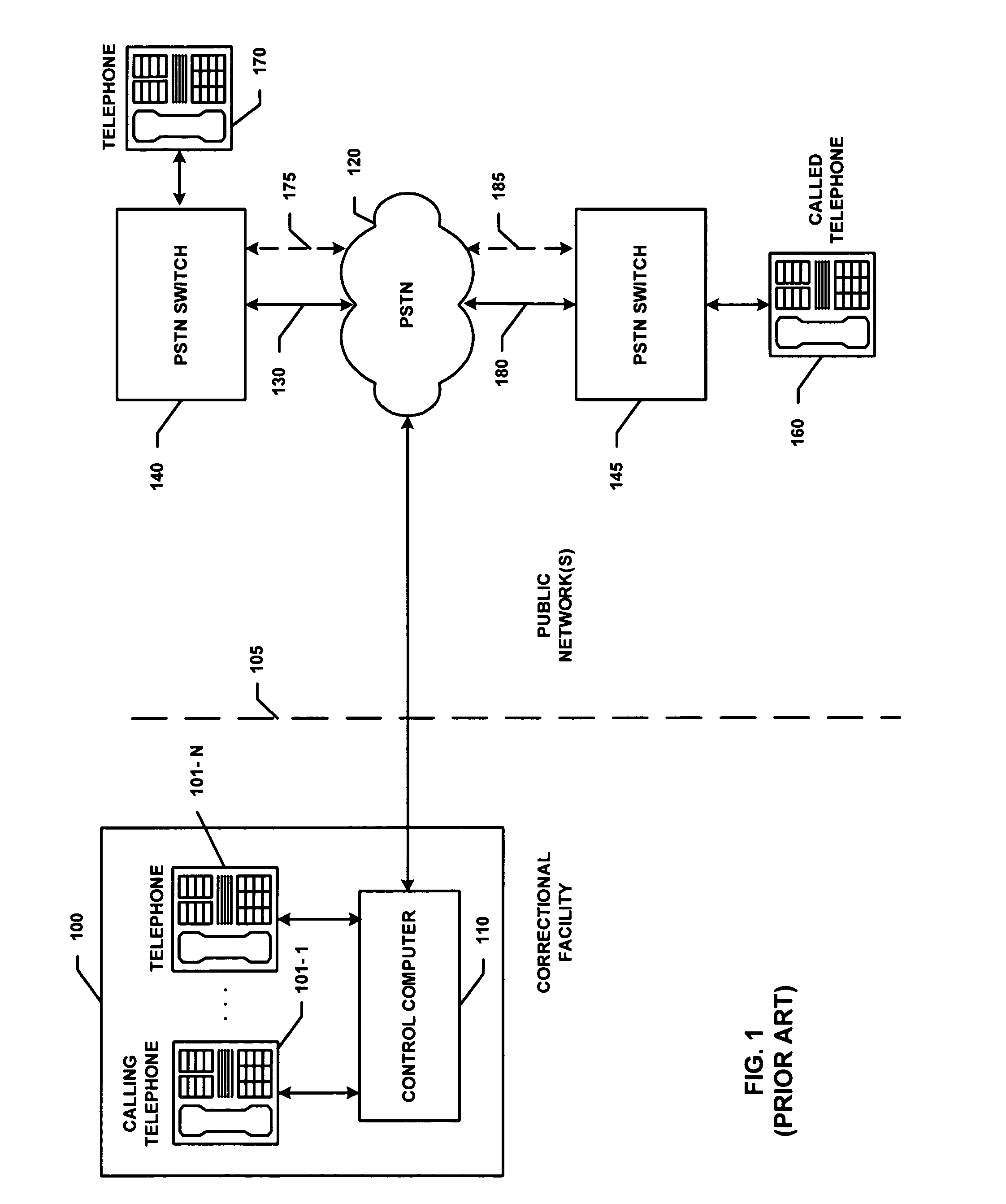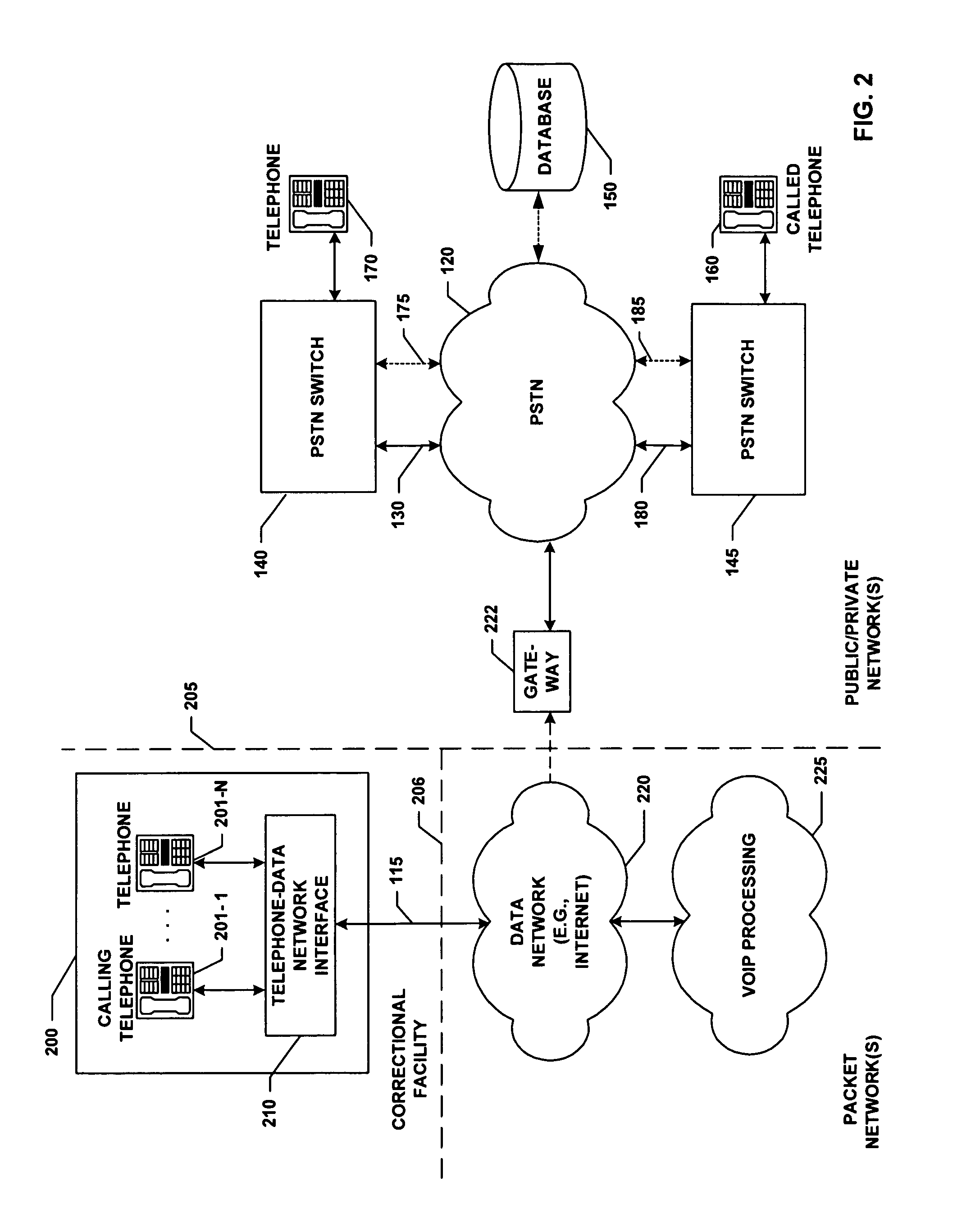Telephony system and method with enhanced fraud control
a technology of fraud control and telephone system, applied in the field of voice and data telecommunications systems and methods, can solve the problems of burdensome and expensive, complex computer hardware and associated software, and limited ics calling, and achieve the effect of improving identification techniques
- Summary
- Abstract
- Description
- Claims
- Application Information
AI Technical Summary
Benefits of technology
Problems solved by technology
Method used
Image
Examples
Embodiment Construction
Some Typical Functions Performed in Completion of ICS Telephone Calls
[0076]As noted above, calls by inmates at correctional facilities are usually subject to a number of administrative, security and billing constraints. In particular, ICS calls are primarily collect calls (though pre-paid, credit card and other call payment options are also used). ICS calls are automatically processed, at present, at the correction facility, by performing a sequence of steps including some combination of the following:
[0077](1) authenticating the caller, as by verifying one or more (or sometimes neither, or with other particular identification) of a keypad entry of a (sometimes public) UserID and a (private) Personal Identification Number (PIN),
[0078](2) if the caller is authenticated, receiving digits keyed by the caller to identify the called party (called number),
[0079](3) recording or retrieving a stored voice announcement, e.g., one made by the caller, identifying the caller,
[0080](4) verifying...
PUM
 Login to View More
Login to View More Abstract
Description
Claims
Application Information
 Login to View More
Login to View More - R&D
- Intellectual Property
- Life Sciences
- Materials
- Tech Scout
- Unparalleled Data Quality
- Higher Quality Content
- 60% Fewer Hallucinations
Browse by: Latest US Patents, China's latest patents, Technical Efficacy Thesaurus, Application Domain, Technology Topic, Popular Technical Reports.
© 2025 PatSnap. All rights reserved.Legal|Privacy policy|Modern Slavery Act Transparency Statement|Sitemap|About US| Contact US: help@patsnap.com



